Foil Surfing: An In-depth Look
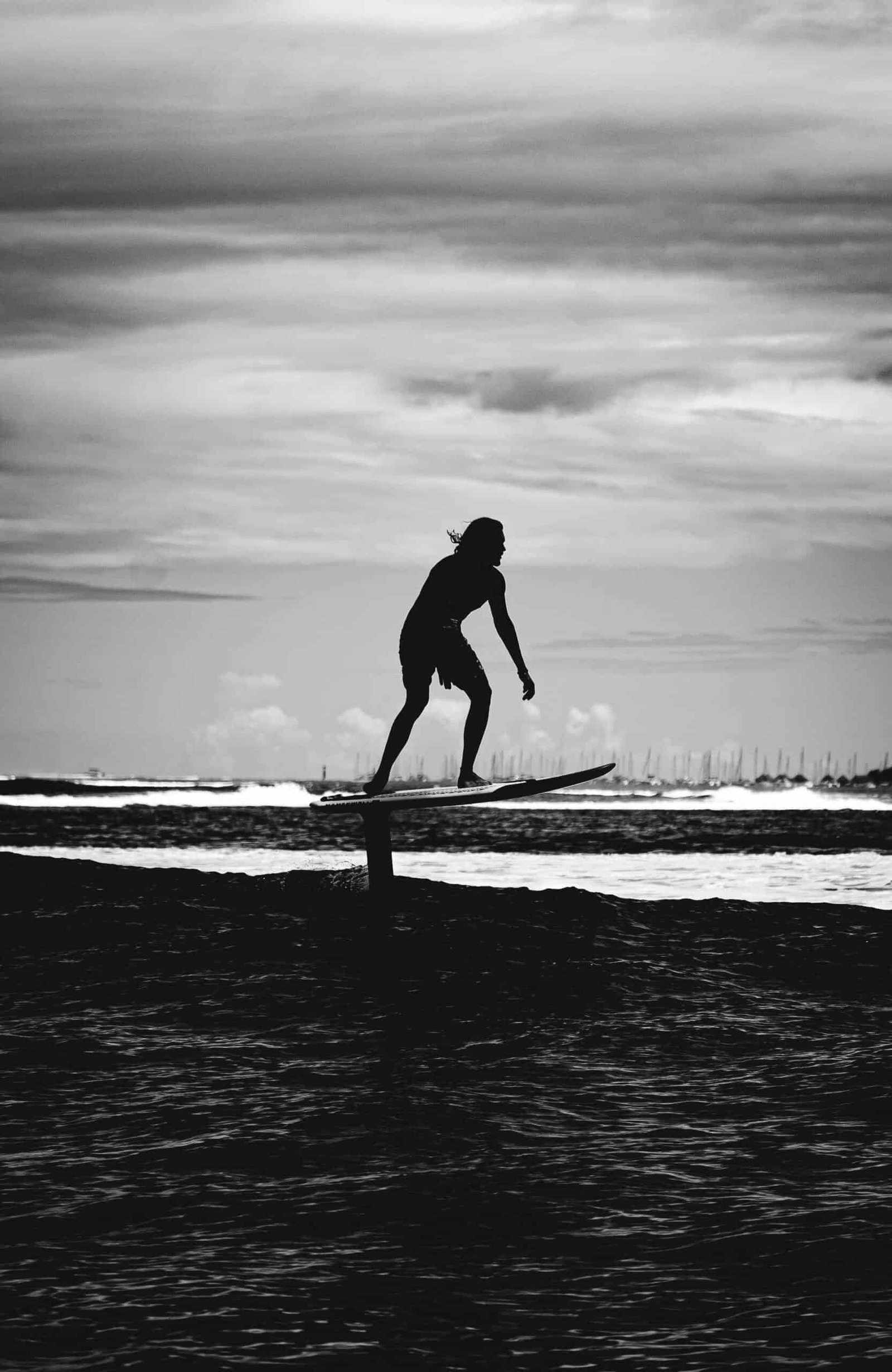
Surfers hold onto your boards! Ready to elevate your surfing game to a whole new level? Welcome to the exhilarating world of foil surfing, where the surf meets the sky, and riders fly above the waves. Fasten your seatbelts, we’re about to embark on a thrilling ride!
Short Summary
Experience the thrilling sensation of foil surfing with its revolutionary hydrofoil fin and mast!
Enjoy longer rides, tighter turns, versatile conditions & avoiding crowded lineups, but stay safe with necessary safety precautions.
Master the basics and find perfect spots for an amazing ride, even as small as half a foot!
The Rise of Foil Surfing
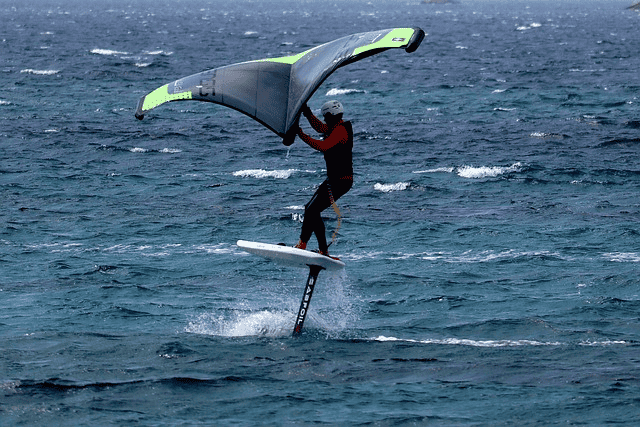
Imagine riding even the worst wave and still having the time of your life. That’s the magic of foil surfing. Born from the ingenuity of hydrofoil technology, foil surfing has exploded into the water sports scene, offering a unique, adrenaline-fueled experience. Laird Hamilton, an audacious innovator, was the first to ride the waves with a foil board towed behind a jet ski, marking a new era in surfing.
From there, the sport has only surged in popularity, appealing to thrill-seekers and wave riders alike. Kai Lenny, the face of foil surfing, set an astounding record for catching eleven waves in a mere six minutes. With a hydrodynamically designed fin, the foil board harnesses all the power of the waves, providing a smoother, more energetic ride than traditional surfing. The foil lifts the surfer above the water, transforming even the smallest waves into incredible rides.
Components of a Foil Surfboard
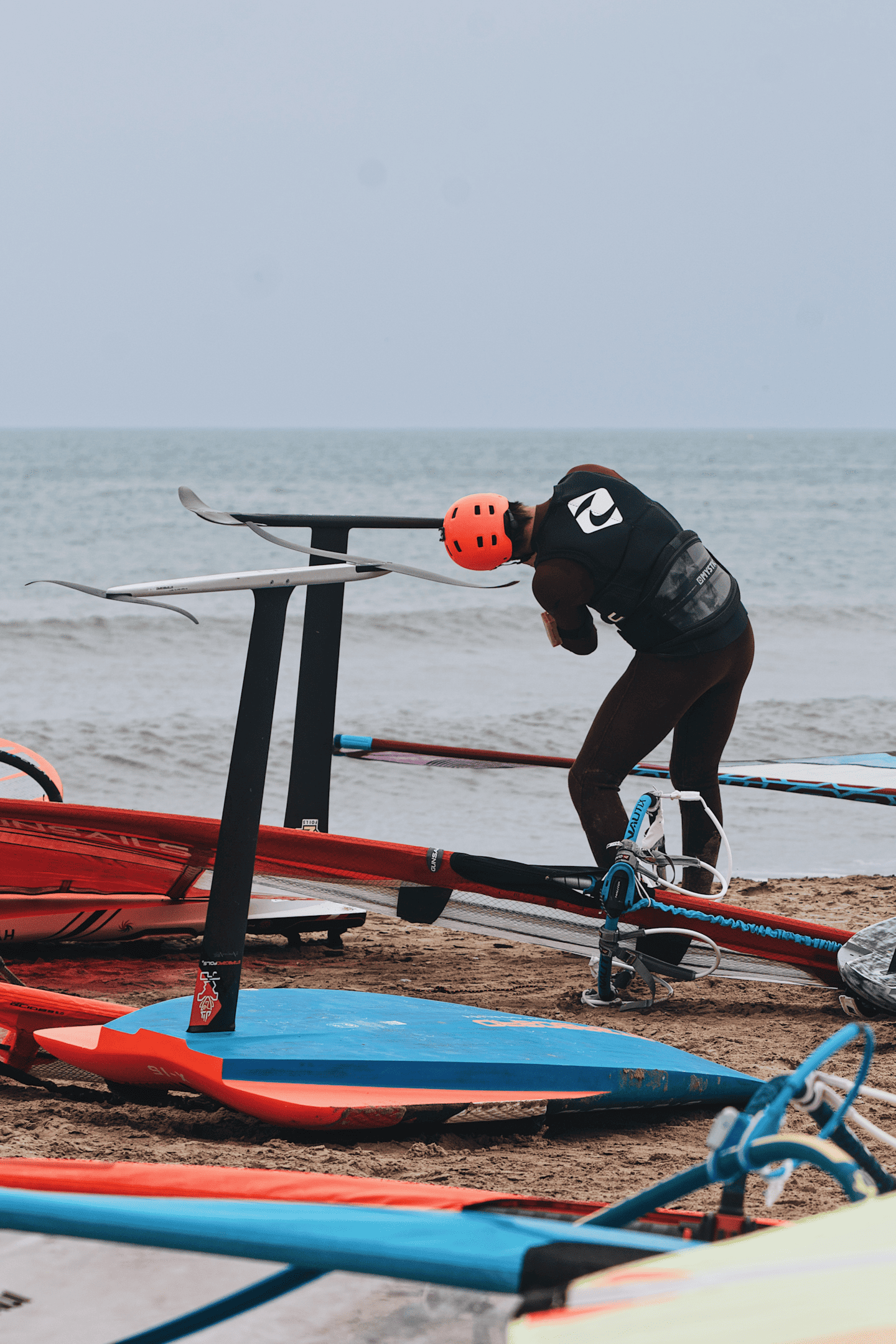
At the heart of this revolutionary surfing experience are two key components of a foil surfboard: the hydrofoil fin and the mast. These work in tandem to lift the surfer above the water, reducing drag and resistance.
The hydrofoil fin is a curved piece of metal that is attached to the bottom of the boat.
Hydrofoil Fin
The hydrofoil fin, a metal wing-like structure extending below the surfboard, is the marvel behind the lift and stability in foil surfing. As the surfer leans back on their back foot, the fin tilts upright, directing water pressure downward and creating lift. It’s like having your personal wave beneath your feet, giving you that incredible feeling of flying above the water.
This innovative design, which was first developed in 1906, has revolutionized the way we surf, bringing a whole new dimension to the sport. Laird Hamilton, a pioneer in water sports, was one of the first to attach a foil to a surfboard, paving the way for the rise of foil surfing.
Mast
The mast is the bridge between the hydrofoil fin and the surfboard. It’s the pillar that holds the structure together, allowing for precise control and maneuverability. The mast, a long pole rising from the surfboard, channels the power of the waves through the hydrofoil, giving the surfer the ability to make tight turns and ride the waves like never before.
But as exciting as it is, using a mast in foil surfing is not without its challenges. It requires a certain level of skill and experience, and safety is paramount. Wearing a helmet and other protective gear is essential when using a mast to minimize the risk of injury.
Advantages of Foil Surfing
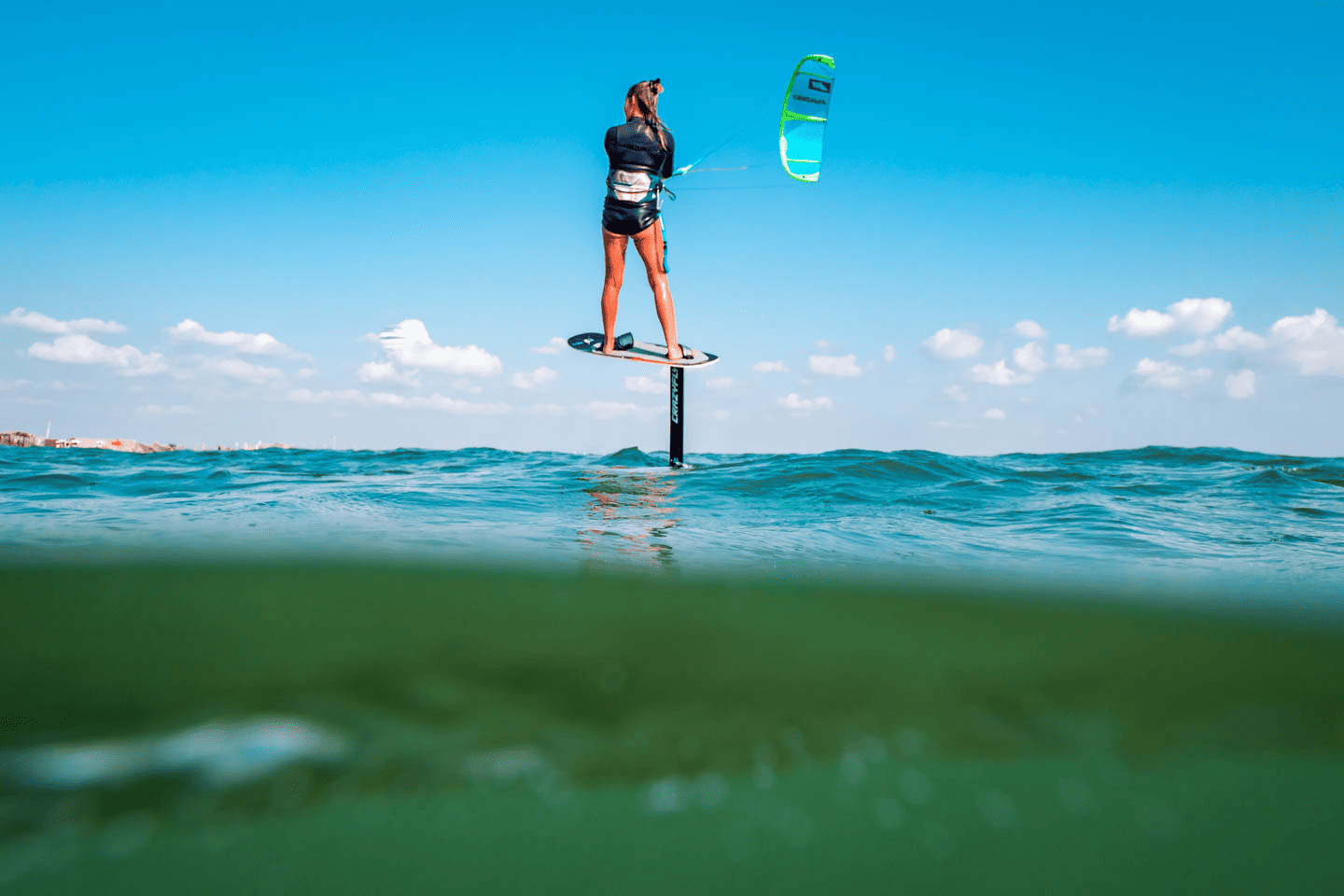
Foil surfing carries with it a host of benefits that set it apart from traditional surfing. For starters, it offers longer rides and tighter turns, allowing surfers to fully harness the energy of the waves. The sensation of gliding effortlessly above the water, making sharp turns with ease, is an experience like no other.
Another significant advantage of foil surfing is its versatility. It allows you to surf in a wider range of conditions, including smaller waves that would be unsurfable with a traditional surfboard. Plus, with a foil board, you can avoid crowded lineups and make the most of whatever conditions are on offer.
Challenges and Safety Concerns
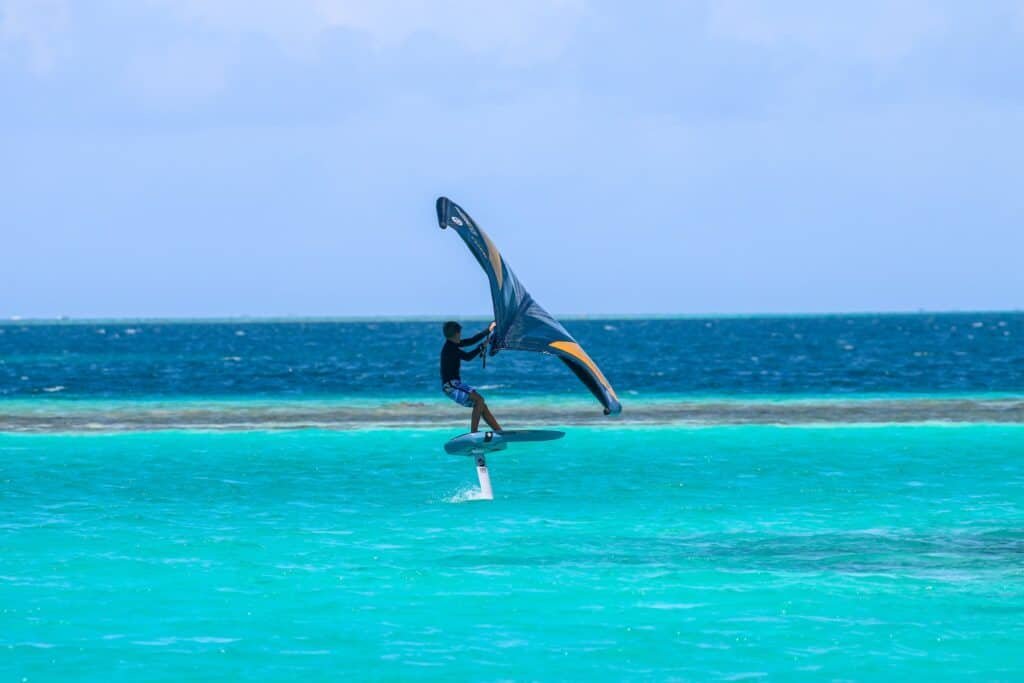
With its unique benefits, foil surfing also brings challenges and safety concerns, making foil surfing difficult compared to traditional surfing. It comes with a potential risk of injury from the sharp metal fin.
To ensure a safe and enjoyable experience, it’s important to understand the basics of the game.
Learning Curve
Foil surfing is not for the faint-hearted. It demands balance, skill, and fitness, making the learning curve steeper than traditional surfing. Before stepping onto a foil board, it’s highly recommended to gain proficiency in regular surfing, as even experienced foil surfers emphasize the importance of mastering the basics.
Learning the basics of foil surfing is easier when towed behind a boat, allowing you to understand how the foil lifts and turns. From there, you can progress to surf foil, riding the waves with a new level of excitement and thrill.
Safety Precautions
Safety is an essential aspect of foil surfing, as foil surfing dangerous situations can arise from the inherent risks involved in the sport. The sharp metal fin poses a significant threat, making it crucial to wear a helmet and practice in less crowded areas to minimize the risk of injury.
Transporting the gear also requires caution due to the sharpness of the foils. And when you’re out in the water, remember, if you think you’re falling, just let go! Trying to correct yourself could lead to landing on the foil, and trust us, it hurts!
The Different Types of Foiling in Surfing
Surf Foiling
Surf foiling is a thrilling new way to experience the ocean. It involves a hydrofoil that’s attached to the surfboard, which allows the board to glide above the water’s surface. This type of foiling is ideal for surfers who want to ride waves that are typically too small or mushy for conventional surfing.
SUP Foiling
Stand Up Paddle (SUP) foiling is another variation of foiling. The rider stands on a board and uses a paddle to propel themselves. The hydrofoil underneath the board lifts it above the water, allowing for a smooth and fast ride. SUP foiling is a great way to enjoy flat water or small waves.
Wing Foiling
Wing foiling, also known as wing surfing, is a combination of windsurfing, kitesurfing, and foiling. The surfer uses a handheld inflatable sail, or “wing,” to catch the wind and propel themselves across the water. The hydrofoil lifts the board above the surface, allowing for a unique, exhilarating experience on the water.
Kite Foiling
Kite foiling is a type of kiteboarding where a hydrofoil is used. The foil allows the board to rise above the water, reducing drag and allowing for higher speeds and more efficient riding. This type of foiling is popular among experienced kiteboarders looking for a new challenge.
Tow-In Foiling
Tow-in foiling involves being towed into a wave by a jet ski or boat. This method is typically used for big wave foiling, where the waves are too large to paddle into. Tow-in foiling requires a high level of skill and is usually practiced by professional or highly experienced surfers.
Choosing the Right Equipment
Selecting the right foil surfing equipment is crucial for a smooth and safe ride. Options range from retrofitting a fin onto a regular surfboard, using a buoyant surfboard with a Tuttle box, to ordering a specialized hydrofoil board from brands like Signature Foils.
Bear in mind, though, that foil board gear, including foil boards, is more expensive compared to regular surfing equipment. But the investment is worthwhile for the unique thrill that foil surfing provides.
Foil Surfing Techniques and Tips
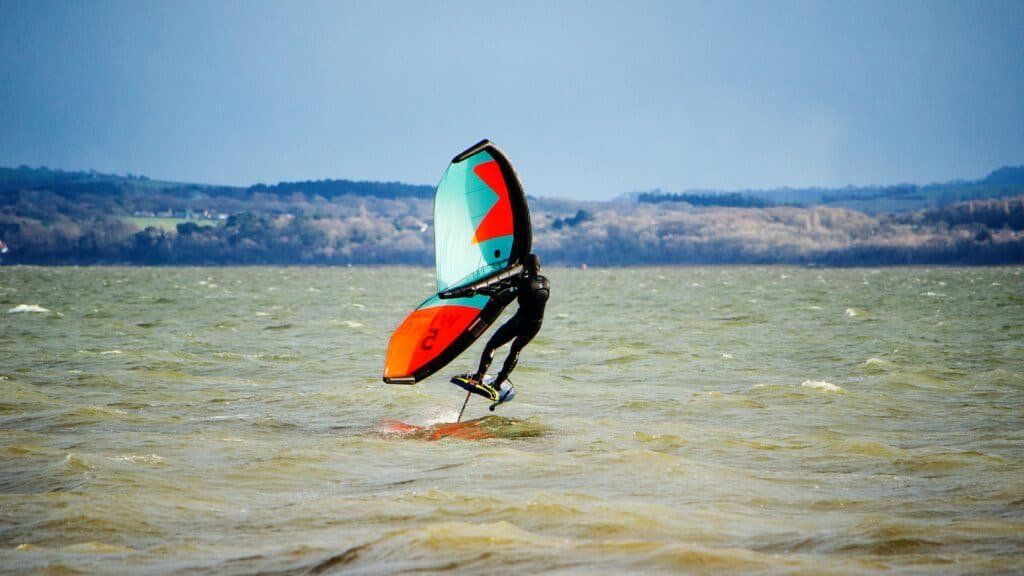
Mastering foil surfing techniques is key to improving your skills and making the most of the sport. The right stance involves keeping your feet shoulder-width apart with a lot of front-foot pressure. Stand up quickly. Put your weight on your front foot as if you’re snowboarding.
“Pumping the foil,” a rhythmic movement that transfers energy to the foil, is another essential technique. And don’t underestimate the importance of having the traction pad installed in the right place. It ensures you don’t have to worry about where to put your foot down.
Best Spots for Foil Surfing
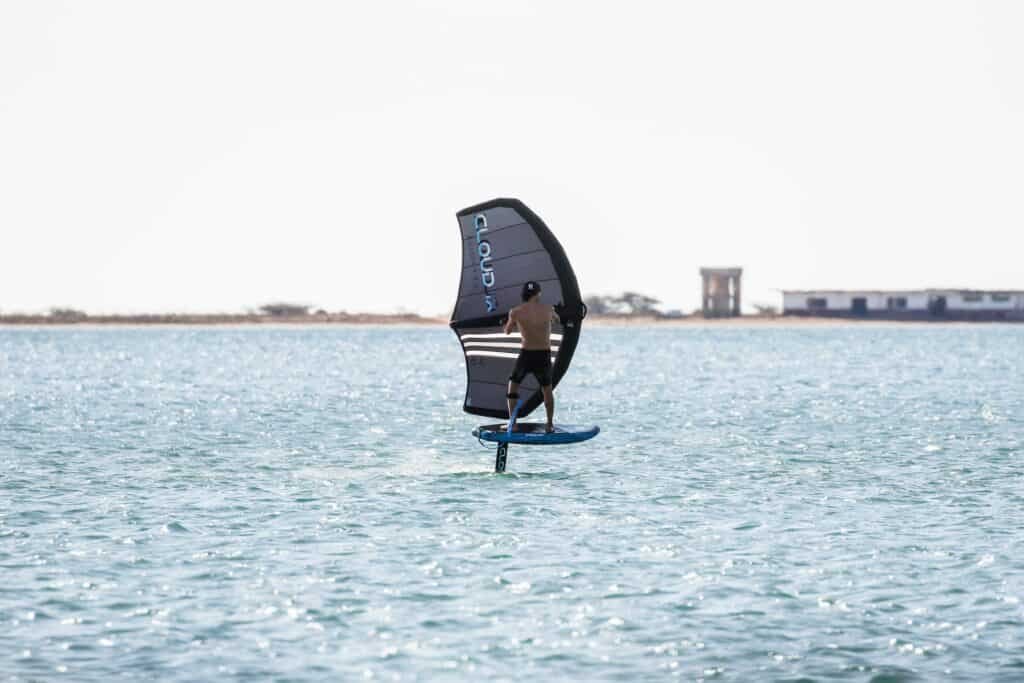
Choosing the right spot for foil surfing can make a significant difference in your experience. Ideal spots feature multiple waves, including small waves, allowing you to catch waves safely and enjoy optimal wave-riding opportunities in less crowded conditions. As you gain experience, you’ll be able to ride waves with more confidence and finesse.
Even half a foot backing off unsurfable waves can be perfect for foil surfing. After all, you’re looking for the worst wave possible! With foil surfing, you tap into the energy that wasn’t rideable before, transforming even the smallest waves into an exciting ride.
Foil Surfing Alternatives
Not quite ready to take on the waves with a foil board? Don’t fret! There are alternatives like paddle foiling and e-foiling that offer similar thrills with a more approachable learning curve.
Paddle foiling uses a paddleboard and a hydrofoil to ride the waves, providing a similar sensation of foil surfing. And if you’re keen on experiencing the sensation of foil surfing without the waves, e-foiling, powered by an electric motor, might be your cup of tea.
Summary
Foil surfing is more than just a water sport; it’s a thrilling adventure that takes surfing to new heights. With the right equipment, techniques, and safety precautions, you can ride even the worst wave and experience the exhilarating sensation of gliding above the water. So, are you ready to take the leap and ride the wave of foil surfing?
Frequently Asked Questions
What is foil surfing?
Foil surfing is an exhilarating sport that lets you soar above the water as your board is lifted up by a whole foot or more. With the sensation of flying along the ocean, it’s no wonder foil surfing is gaining popularity!
Foil surfing is a great way to experience the thrill of the ocean in a unique way. It’s a great way to get out on the water and enjoy the scenery while also getting a great workout. Plus, it’s free.
Is foil boarding easier than surfing?
Foil surfing is a more difficult activity to learn than traditional surfing, with a higher balance challenge. It’s recommended that you first gain experience on a regular surfboard before trying out foil surfing.
Does foil surfing have a motor?
Yes, foil surfing does have a motor – an electric motor with a rechargeable battery and electronic speed controller is encased in a waterproof compartment inside the board, giving the rider the ability to glide silently and easily.
This motor allows the rider to move quickly and efficiently without the need for paddling or any other form of propulsion. It also provides a smooth and quiet ride, allowing the rider to enjoy the scenery and the sound of the waves.
What is the point of a foil board?
A foil board, also known as a hydrofoil board, is a surfboard with a hydrofoil component that extends below it into the water. This design allows the board to lift above the surface of the water, enabling faster speeds and better maneuverability across different surf conditions.
As such, foilboards are becoming increasingly popular among various watersports, from surfing to wakeboarding.
What’s the learning curve for foil surfing?
Foil surfing is more challenging to learn than traditional surfing, requiring balance, skill, and fitness to master. With patience and practice, though, you can become a pro foiler in no time!






